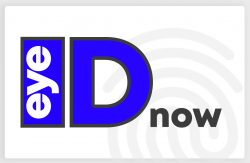
Already, COVID-19 has dramatically accelerated the frequency of digital adoption in banking/financial sector, causing unprecedented changes in customers’ behavior and forcing banks to find scalable ways of working on customer onboarding and other important areas.
According to a recent research conducted by Deloitte, 35% of banking customers globally have increased usage of online banking during COVID-19.
Almost all the major banks have their hands full during this present pandemic situation. In this global economically-derailed market scenario, customers are seeking more financial assistance from banks than ever before. Federal Bank Regulations in the U.S. are encouraging banks to help their customers. Presently, the majority of banks and financial institutions are now leaning on online verification solutions for safe and secure customer onboarding.
The process of customer onboarding during COVID-19 emphasizes the benefits of remote verification services over traditional physical face-to-face verification.
The Key Reasons Why Online Verification Solutions are Getting Significant Momentum over Traditional Verification Processes:
1. Majority of customers are not willing to go through a verification process which involves in-person onboarding with hardcopy documentation.
2. Secure online verification solutions that allow remote customers onboarding are significantly growing in popularity because of the convenience to customers during the global lockdown.
3. Other benefits of remote customer onboarding include lower cost, enhanced compliance and improved customer experience.
Onboarding new customers always offers excellent opportunities for banks and financial institutes to showcase their efficiency and dedication to providing great customer support. Unfortunately, current customer onboarding processes present challenges that create poor customer experience.
A recent Deloitte study published on Inside Magazine has revealed the fact that 38% of customers discard the onboarding process because of heavy volume of touchpoints and paperwork involved.
Finding new and intelligent ways to improve customer onboarding is now paramount for banks and financial institutes.
Remote Customer Onboarding with Visual Identity Verification Solution Online:
Traditional process of in-person identity verification with hardcopy documentation is becoming obsolete and getting replaced by online visual identity verification services that allow new customers to be onboarded remotely, which improves the overall customer experience and speeds up the onboarding process seamlessly.
The best part of a remote visual identity verification solution is that it helps banks and financial institutions continue the customer onboarding process remotely without breaking lockdown regulations.
However, choosing the right online identity verification service is not an easy job. It is important to choose a software or service which is familiar with all the regulations and is highly adaptable.
Though digital verification offers more security than conventional in-person, paper-based verification, the compliance team of banks and financial organizations should investigate the proposed solution thoroughly. The compliance teams should ask questions about the detailed process of digital identity verification and how each customer’s data is stored, including the kind of encryption standards the software is using, etc.
A Legitimate Digital Onboarding Process Always Involves The Following Steps:
- It should be able to collect data and documents of customers.
- It should allow authorities to compare the image of the person against the picture on the documented ID at the time of validation.
- A legitimate visual identity verification tool can efficiently detect geo-location and IP address of customers.
- It should be able to store each customer’s data in a secure cloud environment.
- The tool should provide a comprehensive admin panel to the authority.
- It should allow the authority to conduct any number of visual meetings with customers remotely.
With the ever-evolving customer requirements, the majority of customers are looking for new and convenient ways to interact with their financial service providers. Keeping this in mind, banks and other financial institutions must adopt highly agile and digital-savvy approach to onboard new customers with an effective visual identity verification solution.
